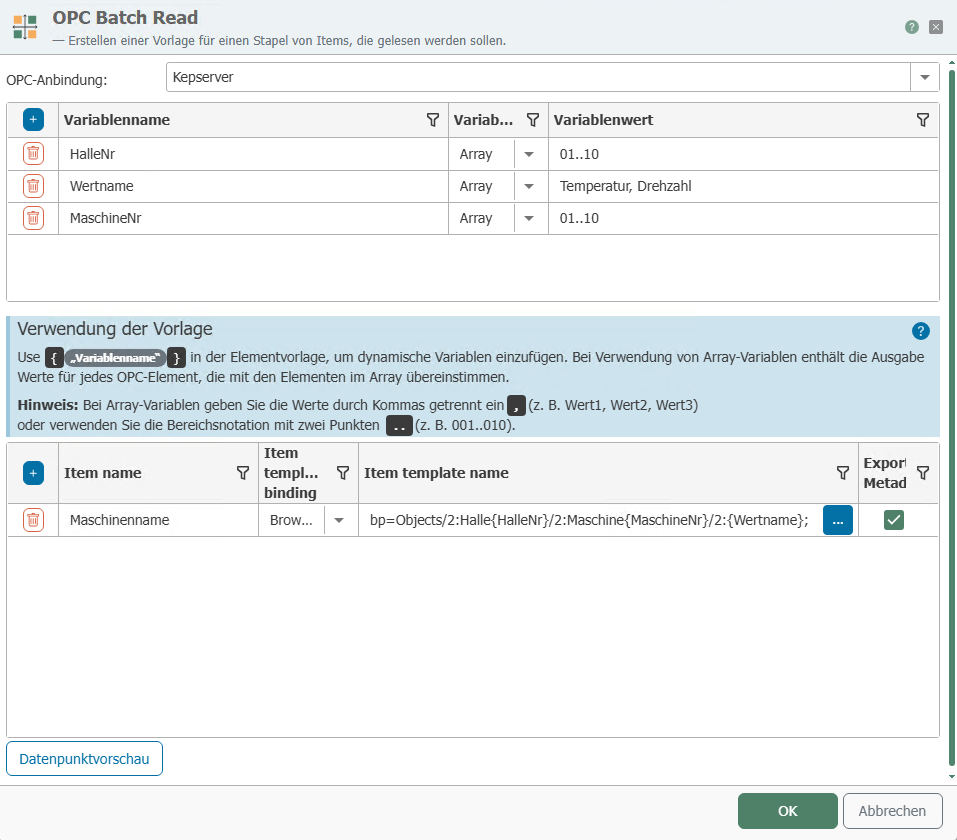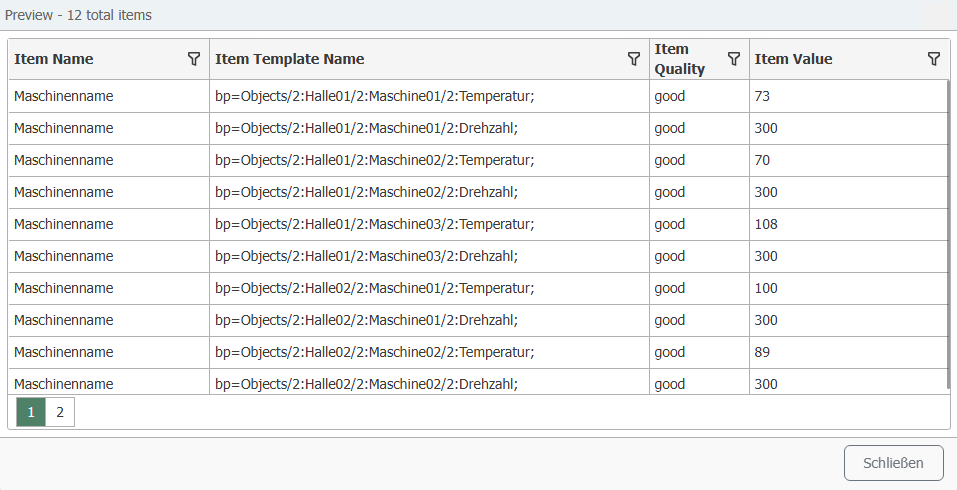OPC Batch Read
OPC Batch Read is only available for OPC UA connection.

The OPC Batch Read transfer object makes it easy to read a large number of OPC values that have a standardized structure, without having to define each value individually. The values to be read are specified via variables. The following is a detailed explanation of how to use this transfer object.
Configuration
The following properties can be configured in the OPC Batch Read transfer object:
| OPC connection | OPC connection used to access the OPC data point group. |
Variables
The following properties can be set for variables:
| Type | Array: The entered value is passed as an array. String: The entered value is adopted as a string. |
| Value | If the String type is selected, the value is passed as entered. If the Array type is selected, the value is passed as an array. The value of an array variable can be a list of values, such as temperature, speed, or a range of numbers. A range of numbers is defined by writing two dots between two numbers, e.g. 1..100 or 001..010.Number ranges can also be part of a list. E.g. 1..10, 15..20 . Words can also be used together with number ranges in a list. |
When specifying a range of numbers, the smaller number must always be on the left-hand side.
Templates
Templates provide an easy way to configure the reading of many values.
The button "..." can be used to open the tag browser to select a path. This function is used to insert a path into the template. This means that the path in which the variables are to be inserted does not have to be typed in manually.
At runtime and in the data point preview, the variables in the template are replaced with the values of the variables. Paths are created with all possible combinations of the values from the variables.
The following properties can be set for templates:
| Item name | The name under which all values are output at runtime. |
| Item-Templatebinding | Here you can select whether the items are to be read by browse path or node ID. |
| Item-Templatename | The path in which the items to be read can be configured using variables. |
| Export Metadata | If this option is active, metadata is also output in addition to the value. E.g. the quality ID. |
Example
A company has two halls, in each of which three machines are operated. The values “speed” and “temperature” are to be read from each of these machines.
The path for reading each of these values would be structured according to the following pattern:
As a browse path: bp=Objects/2:Hall{hall number}/2:Machine{machine number}/2:{value name};
With node ID: ns=2;s=Hall{hall number}.Machine{machine number}.{value name}
The path is static except for the three variable values. Variables can be created for these variable values.
For the example, this could look like this:

The tag browser can be used to select a path that matches the pattern for which variables are to be provided.
For the example, this path would be suitable:

So that not every hall and every machine has to be added individually, the variables just created can be used here.
The finished path with variables could then look like this:

By using variables, it was possible to configure the reading of 12 data points with one template without having to configure each individual path.
It is possible to map many more data points using a template. The example was deliberately kept small for illustrative purposes.
The “Data point preview” button can be used to display a preview of the values that would be read with the current configuration.
